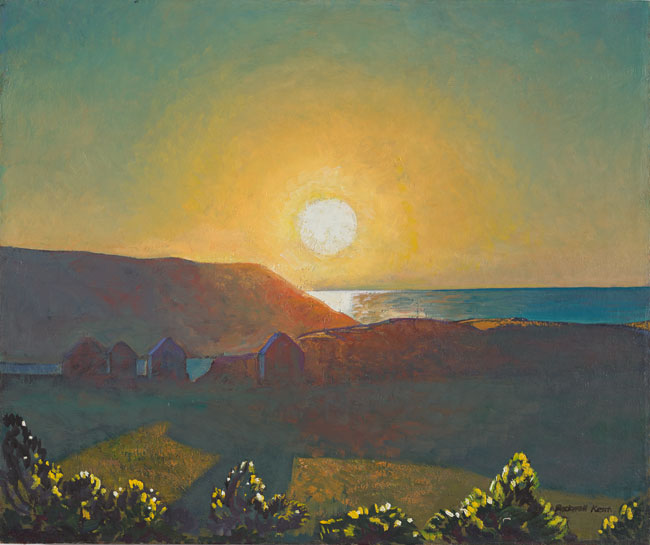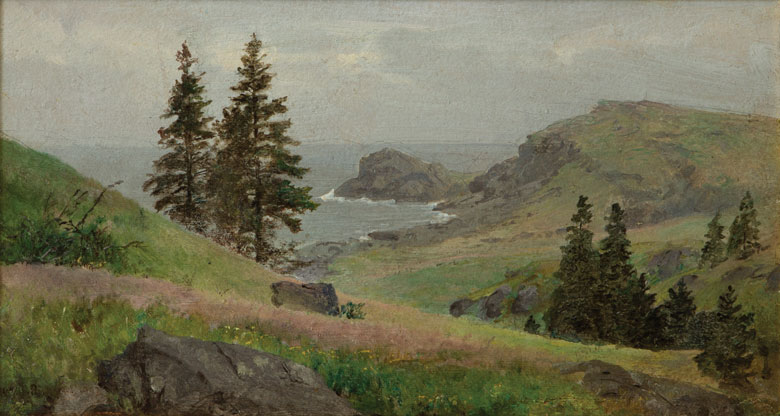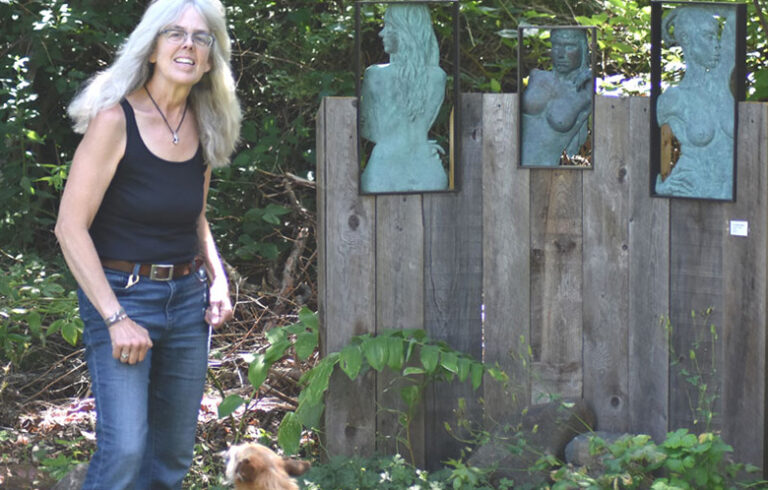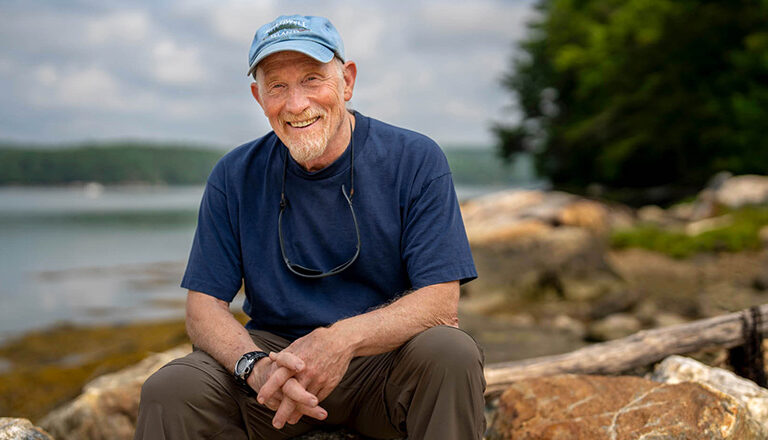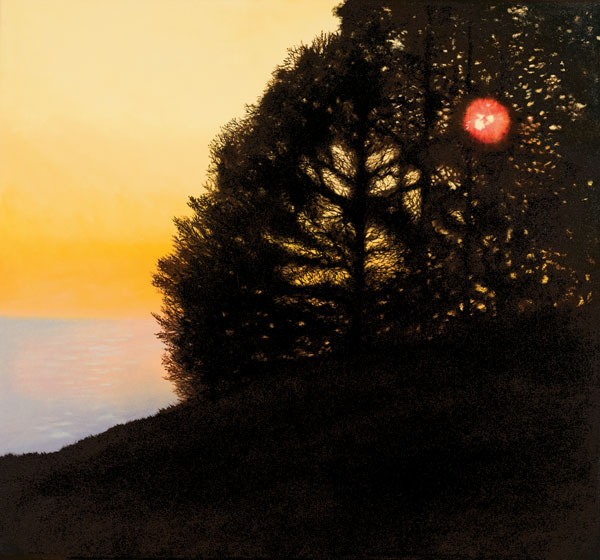
This summer, Monhegan Museum of Art & History will present an exhibition that reexamines the island’s history: “The Monhegan Wildlands: Art, Ecology, and the Resilience of a Maine Island” illuminates its extraordinary journey of environmental transformation and resilience from the close of the most recent ice age to the contemporary period, as seen through the eyes of the artists who depict the terrain and the scientists who study its dynamic ecology.
The exhibition, created in collaboration with Bowdoin College Museum of Art, is on view in Brunswick through June 1. The island version will be on view at the Monhegan Museum July 1-Sept. 30.
The show will feature a wide range of artwork—from paintings by American modernist artists such as Rockwell Kent and Edward Hopper, to contemporary pieces by Lynne Drexler and Barbara Putnam—alongside historical artifacts such as bone harpoon points and other objects created by Indigenous inhabitants, documents from the island’s history, and scientific research on elements such as the human introduction, and subsequent removal, of first sheep and then deer.
“New York artist Rockwell Kent first visited Monhegan Island in 1905,” said Barry Logan, a professor of natural sciences at Bowdoin College and a co-curator of the exhibition, “just as more than a half century of intensive sheep farming was coming to an end, so the landscape he saw and depicted was in the earliest stages of recovery from its greatest ecological disturbance in recorded history.”
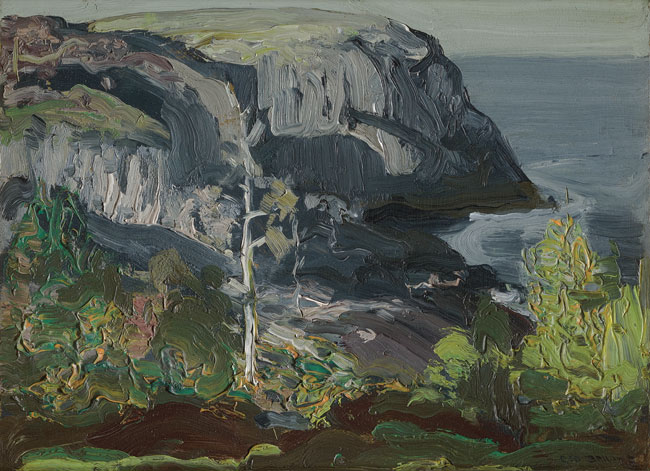
Jennifer Pye, director of the Monhegan Museum and a co-curator of the exhibit, added that “although visible from the mainland on clear days, Monhegan Island’s geographical isolation fosters a unique ecology, as well as self-reliance among its residents.”
Monhegan Island is just less than a square mile in size, with a year-round population of around 60 residents. Yet its small scale has enabled the kind of close study—by artists and scientists alike—that reveals in intimate detail the changes in the ecology of the forested landscape. Monhegan forests have been permitted to follow their own trajectory free from development, thanks to the exceptional conservation-mindedness of the community. Fully three quarters of Monhegan Island—the Wildlands—is conserved in a land trust where the prevailing stewardship ethos is to let nature take its course.
The exhibition delves into the island’s evolving ecology, history, and artistic representation through various thematic lenses. The exhibition spans 12,000 years, highlighting the significance of Monhegan to the Wabanaki’s fishing culture and showcasing the ancient Cathedral Woods that have inspired artists. The narrative continues to explore forest decline in the mid-20th century due to deer and mistletoe, leading to conservation efforts.
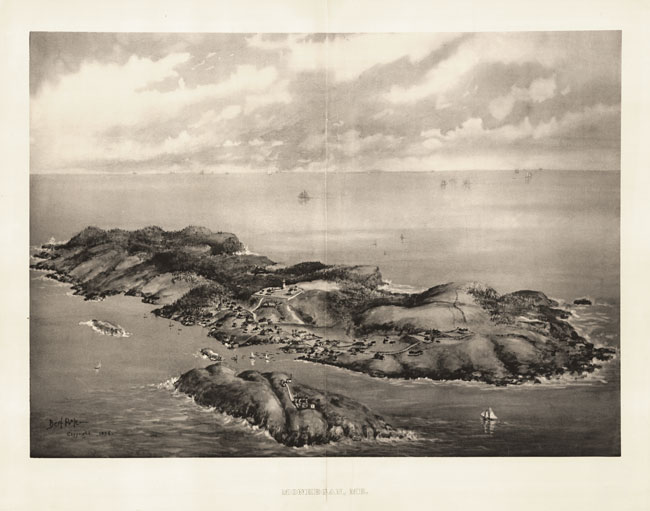
Finally, it examines the resurgence of secondary forests in the 21st century, emphasizing stewardship and the role of contemporary artists in portraying the island’s dynamic landscape and community life.
“While Monhegan has long been a canvas for artists, it has been an equally enriching landscape for scientists, a unique opportunity to observe the mechanisms of forest succession and resilience on a small scale,” said Frank Goodyear, co-director of the Bowdoin College Museum of Art and a co-curator of the exhibition.
“As an art historian, it has been an engaging experience to work on developing an exhibition that integrates the narratives of artists, ecologists, and the community, and that so effectively relates these unique and instructive histories to the arc of environmental stewardship on Monhegan Island.”
The museum is open daily from June 15-Sept. 30. See www.monheganmuseum.org.
